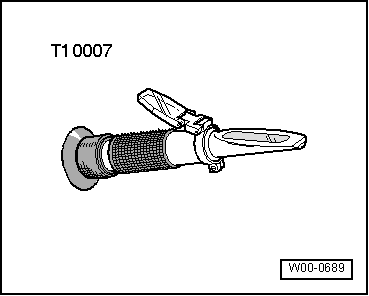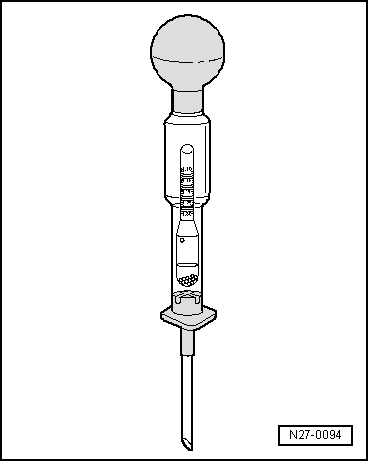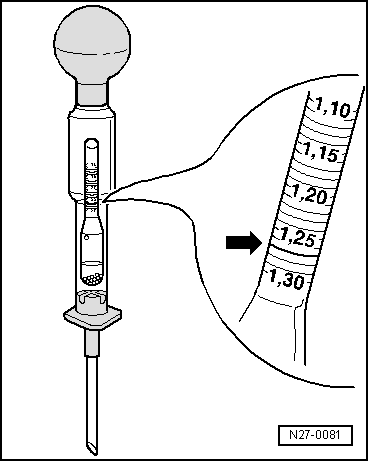A3 Mk2
|
|

|
 Note
Note
|

|
|

|
| Charge state | Relative density of electrolyte in kg/dm3 | |
| In normal climatic zones | In tropical countries | |
| discharged | 1.12 | 1.08 |
| half charged | 1.20 | 1.16 |
| well charged | 1.28 | 1.23 |
|
| Example 1 | ||||||||
| Battery cell | 1 | 2 | 3 | 4 | 5 | 6 | ||
| Relative density per battery cell in kg/dm3 | 1.24 | 1.25 | 1.25 | 1.10 1) | 1.24 | 1.25 | ||
| ||||||||
| Example 2 | ||||||||
| Battery cell | 1 | 2 | 3 | 4 | 5 | 6 | ||
| Relative density per battery cell in kg/dm3 | 1.26 | 1.26 | 1.25 | 1.14 1) | 1.18 1) | 1.24 | ||
| ||||||||
 Note
Note
 Note
Note
|

 WARNING
WARNING Caution
Caution